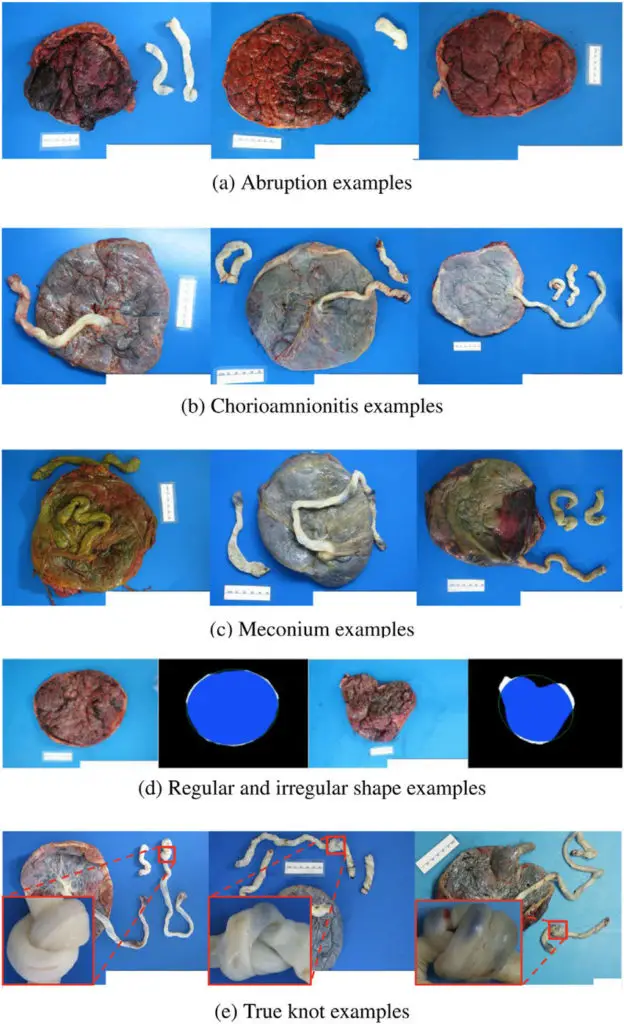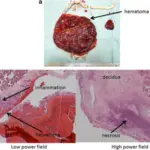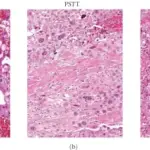Twin placentas are the dizygotic twins form when two separate eggs combine with two individual sperm. Each embryo develops it’s own placenta.
What is the Pathology of Twin Placentas?
The pathology of twin placentas is:
-Etiology: The cause of twin placentas is placental vascular anastomoses.
-Genes involved: None.
-Pathogenesis: The sequence of events that lead to twin placentas shows vascular anastomoses between the twins with arteries superficial to veins.
-Morphology: The morphology associated with twin placentas shows dichorionic or monochorionic physiology.
-Histology: The histology associated with twin placentas shows a T zone in the region of the disc where the dividing membranes attach to the chorionic plate.
How does Twin Placentas Present?
Patients with twin placentas typically affect females present at childbearing age. The symptoms, features, and clinical findings associated with twin placentas include acardia.
How is Twin Placentas Diagnosed?
Twin placentas are diagnosed by doing an obstetric ultrasound at a gestational age of 10–14 weeks.
How is Twin Placentas Treated?
Twin placentas is treated with laser fetal surgery.
What is the Prognosis of Twin Placentas?
The prognosis of twin placentas is good.



